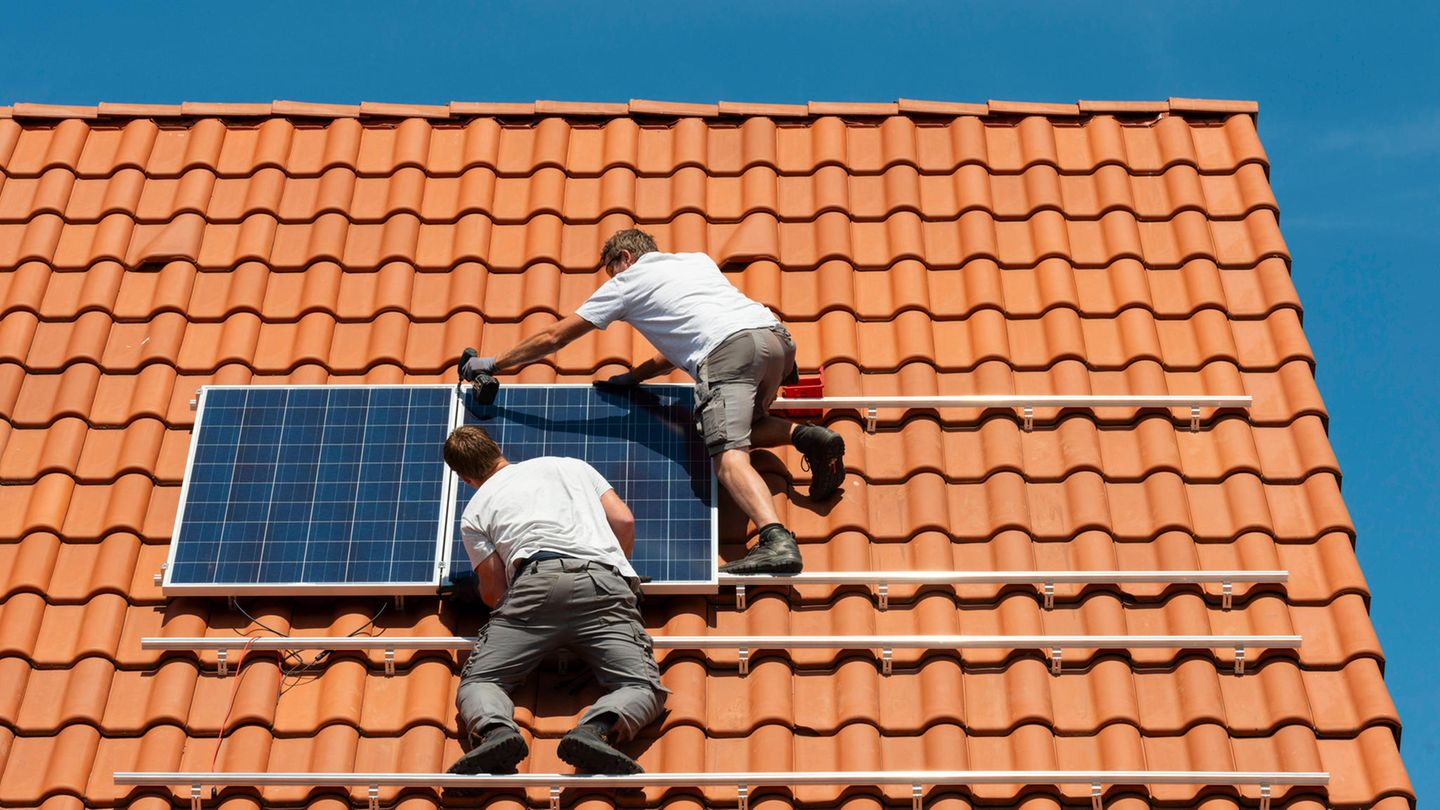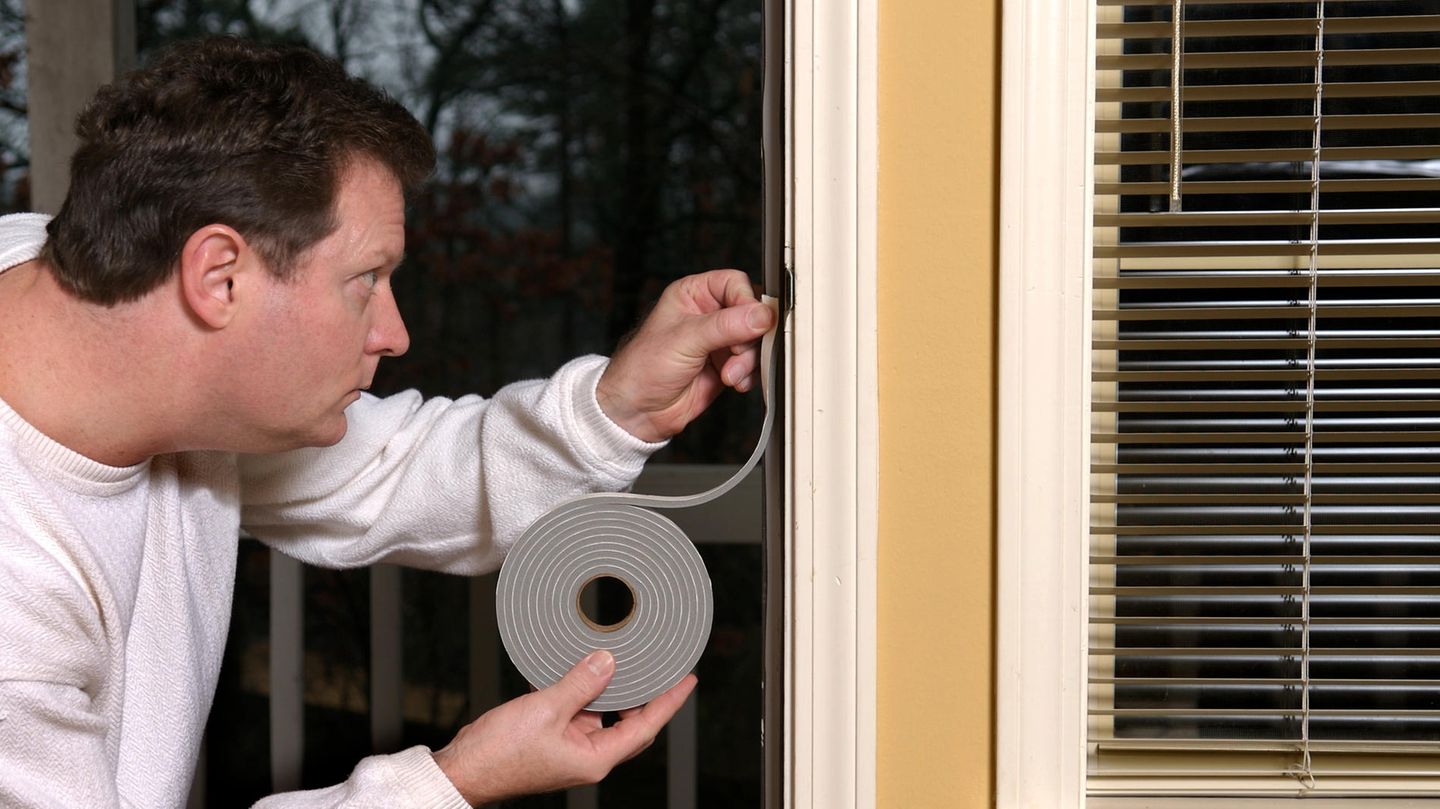There is the prospect of lower energy costs and government subsidies if homeowners combine heat pumps, solar systems and electricity storage. There is particularly great potential on roofs.

This is original content from the Capital brand. This article will be available for ten days on stern.de. After that, you will find it exclusively on capital.de. Capital, like the star to RTL Germany.
According to the Solar Atlas of the German Aerospace Center (DLR), Germany could produce a total of 623 terawatt hours of additional solar energy annually if all suitable areas were used. This corresponds to 623 billion kilowatt hours and is enough to supply just over 180 million households per year with an average consumption of around 3400 kWh. For comparison: In 2022, there were around 42 million households in Germany. If the potential can be used efficiently, Germany could theoretically supply almost five times as many households with this energy as there actually are.
The step towards energy independence is also becoming increasingly attractive for many homeowners. As a recent study by RWTH Aachen University and the energy company Eon shows, a combined system of solar panels, heat pumps and battery storage pays for itself after just eleven years. With heat pumps alone, this takes up to three years longer. In addition, a combined system can reduce energy costs by up to 70 percent. The study compares houses from different years of construction in the cities of Essen and Munich.
There are municipal funding programs for solar systems
As the study shows, combination systems consisting of a heat pump, solar system, power storage and management system are not only suitable for new buildings, but also for existing properties. Nevertheless, it might be sensible to first draw up a renovation plan. “This may mean that you don’t necessarily start by installing a new heat pump, but by making the house more energy efficient with new windows or an insulated facade,” says Dagmar Faltis, managing director of Aroundhome, a recommendation platform that connects homeowners with specialist companies for their house projects. Faltis therefore recommends that the first step is to check where a household in an existing property can in principle save energy.
If a house has been upgraded to be sufficiently energy efficient, it is worth installing such a combination system. According to Faltis, owners can expect costs of up to 75,000 euros. That may sound like a lot of money at first. But anyone who decides to switch to climate-friendly energy sources can receive government funding for the individual modules from the Kreditanstalt für Wiederaufbau (KfW), the Federal Office for Economic Affairs and Export Control (BAFA) and the respective municipalities.
The KfW subsidizes the costs of purchasing, installing and commissioning heat pumps by up to 70 percent. Individual measures to make the house more efficient, such as insulation or replacing windows, are subsidized by the BAFA by up to 20 percent. There are municipal funding programs for solar systems – for example in the cities mentioned in the RWTH Aachen study: From July 2024, for example, the city of Munich will subsidize PV systems on residential buildings with around 250 euros per kilowatt peak output. There are surcharges for modules on listed buildings and roof-integrated systems. After a temporary funding freeze, residents of the city of Essen have been able to benefit from subsidies for a PV system again since the beginning of 2024. Essen subsidizes the purchase and installation of a PV system with, among other things, 1,000 euros for systems with more than five and up to ten kilowatt peak output.
Green light for balcony power plants
Those who produce their own energy naturally save on electricity costs. However, since consumers cannot always supply themselves 100 percent of their energy despite systems with storage systems, many households must continue to use electricity from the utility network. From 2025, combined systems with intelligent management systems will become even more attractive for homeowners. Then all electricity providers will be required to offer a dynamic electricity tariff, where electricity prices change throughout the day depending on utilization. This gives consumers the opportunity to buy electricity when it is cheaper.
Balcony power plants are suitable for people who rent and would like to live a little more energy-independently. A new law makes this even easier for them. At the beginning of July, the Bundestag classified balcony power plants as a “privileged measure” in rental and home ownership law. This means that it has become even more difficult for landlords and homeowners’ associations to prohibit their installation.
Source: Stern




